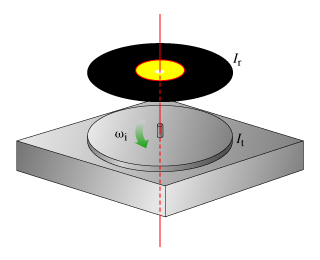a block of mass 1.50 kg starts at rest at the top of a frictionless30degree incline. it slides 2.55 meters along the incline beforereaching a frictionless horizontal surface, where it makes aglancing collision with a 2.00 kg block which is initially atrest.
After the collision, the second block moves at 2m/s at an angle of37 degree to right of the initial path of the incoming first block(see diagram below)
1. Find the velocity of the first block at the bottom of theincline. There are at least three different ways to do this. Findand use all three.
2. Find the velocity (magnitude and direction) of the first blockafter the collision with the second block.
3. Is kinetic energy conserved in the collision? Showmathematically.
4. Because there is no friction, you should be able to explain whyit doesnât matter if the velocities after collision are measure 1,2, or even 3 seconds (or more) after the collision. Do so
5. How would the answers to #2, 3, and 4 be changed if there werefriction? No math needed; answer qualitatively.
a block of mass 1.50 kg starts at rest at the top of a frictionless30degree incline. it slides 2.55 meters along the incline beforereaching a frictionless horizontal surface, where it makes aglancing collision with a 2.00 kg block which is initially atrest.
After the collision, the second block moves at 2m/s at an angle of37 degree to right of the initial path of the incoming first block(see diagram below)
1. Find the velocity of the first block at the bottom of theincline. There are at least three different ways to do this. Findand use all three.
2. Find the velocity (magnitude and direction) of the first blockafter the collision with the second block.
3. Is kinetic energy conserved in the collision? Showmathematically.
4. Because there is no friction, you should be able to explain whyit doesnât matter if the velocities after collision are measure 1,2, or even 3 seconds (or more) after the collision. Do so
5. How would the answers to #2, 3, and 4 be changed if there werefriction? No math needed; answer qualitatively.

